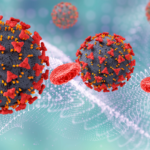FDA-approved uses for the benzodiazepine medication diazepam include the treatment of anxiety disorders, the short-term relief of anxiety symptoms, the treatment of spasticity linked to upper motor neuron disorders, the treatment of preoperative anxiety, the management of some patients with refractory epilepsy, the treatment of severe recurrent convulsive seizures, and the treatment of status epilepticus.
Diazepam is used off-label (not FDA-approved) for sedation in the intensive care unit and short-term spasticity management in cerebral palsy children.
This activity will focus on the mechanism of action, adverse event profile, approved and off-label uses, dosing, pharmacodynamics, pharmacokinetics, monitoring, and pertinent interactions of lorazepam, which are important for inter professional team members using lorazepam for any of its intended indications.
Objectives:
- Determine when to use benzodiazepines.
- List the side effects and contraindications of benzodiazepines.
- Review diazepam’s mode of action.
- List the benefits of better inter professional team care coordination for patients receiving benzodiazepine-based treatment.
Why is benzodiazepine recommended?
Diazepam is used to calm agitation brought on by alcohol withdrawal and to reduce anxiety. It is also used in conjunction with other drugs to treat spasticity and muscular spasms brought on by a variety of neurological conditions, including stiff-man syndrome, athetosis, paraplegia, and cerebral palsy (a disease that impairs movement and balance) (a rare disorder with muscle rigidity and stiffness).
To reduce seizures, diazepam is frequently used in combination with other drugs. Diazepam belongs to the group of drugs known as benzodiazepines. It works by reducing the brain’s excessive overactivity.
Alcohol withdrawal, anxiety, and seizure disorders are all treated with diazepam. Additionally, it is employed to offer sedative before to medical operations and to ease muscular spasms. The brain and nerves are calmed by this medicine. The chemical class known as benzodiazepines includes diazepam.
Action Mechanism
Benzodiazepines work by increasing the action of gamma-aminobutyric acid (GABA) at multiple locations. Benzodiazepines specifically bind at an allosteric location at the interface of the alpha and gamma subunits of GABA-A receptor chloride ion channels.
The allosteric binding of diazepam at the GABA-A receptor increases the frequency with which the chloride channel opens, resulting in enhanced chloride ion conductance. This charge transfer causes hyperpolarization of the neuronal membrane and decreased excitability.
The anxiolytic effects of diazepam are caused via allosteric binding within the limbic system. The principal mediator of diazepam’s myorelaxant actions is allosteric binding within the spinal cord and motor neurons.
Diazepam is extremely lipophilic. While the medicine has a somewhat quick beginning of effect, it rapidly redistributes. Diazepam is generally broken down by the microsomal enzymes CYP2C19 and CYP3A4 into numerous active metabolites, the most important of which being desmethyldiazepam. Oxazepam and temazepam are two minor active metabolites.
Certain medicines that suppress the CYP2C19 enzyme (fluoxetine and chloramphenicol) and the CYP3A4 enzyme (ketoconazole, protease inhibitors, erythromycin) may cause diazepam levels to rise. In contrast, CYP2C19 and CYP3A4 inducers (carbamazepine, topiramate, phenytoin, St. John’s wort, rifampin, or barbiturates) may cause lower levels. Diazepam metabolites are conjugated with glucuronide and eliminated almost totally in the urine.



